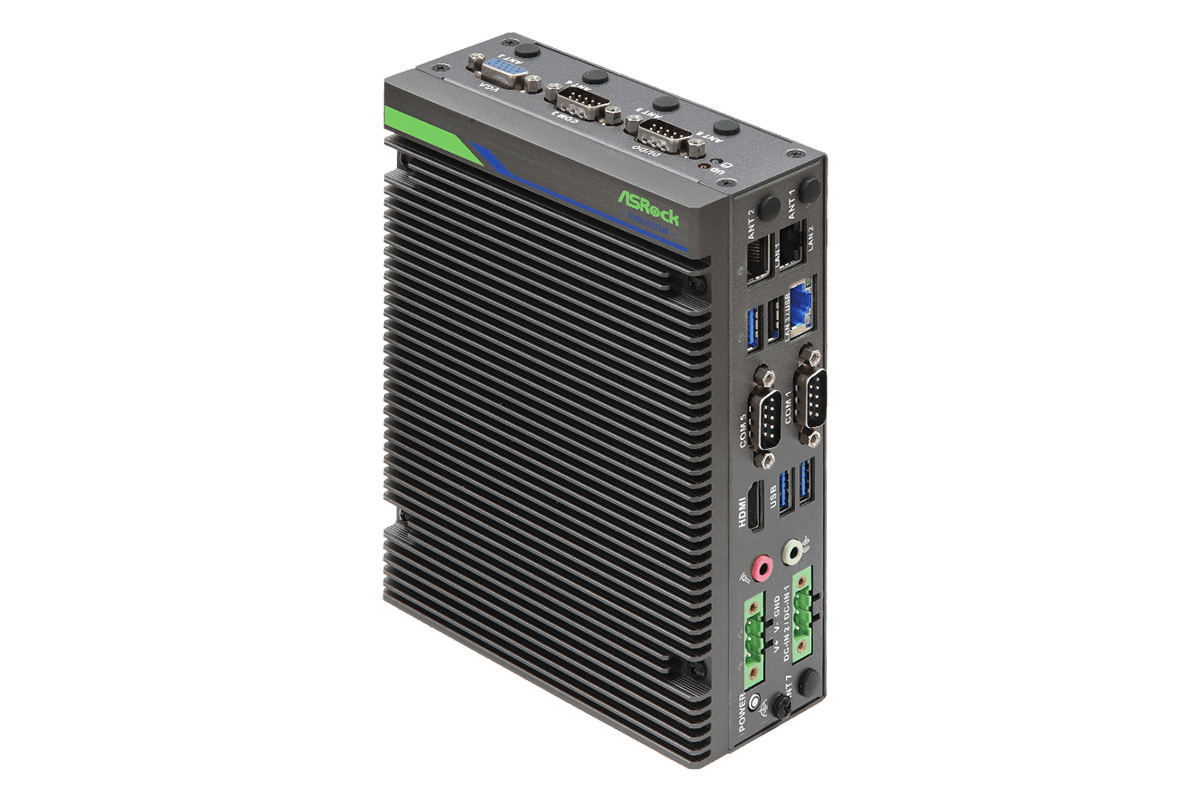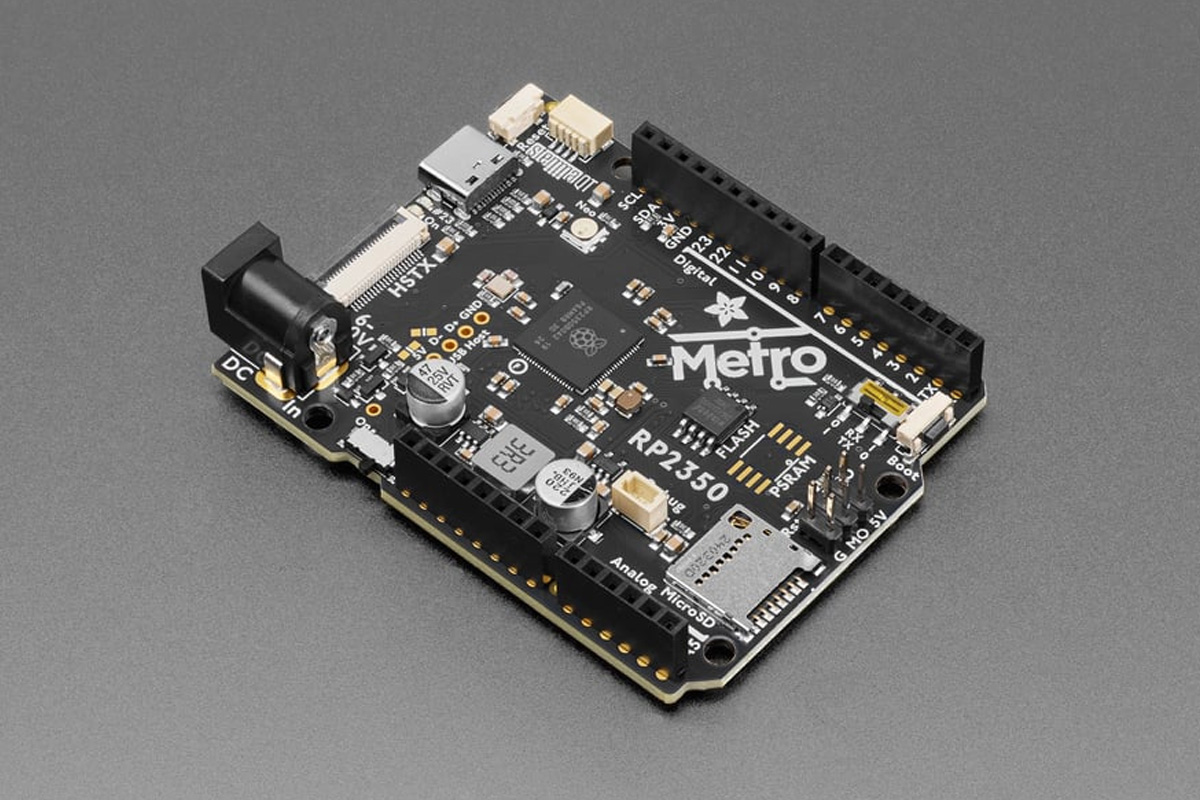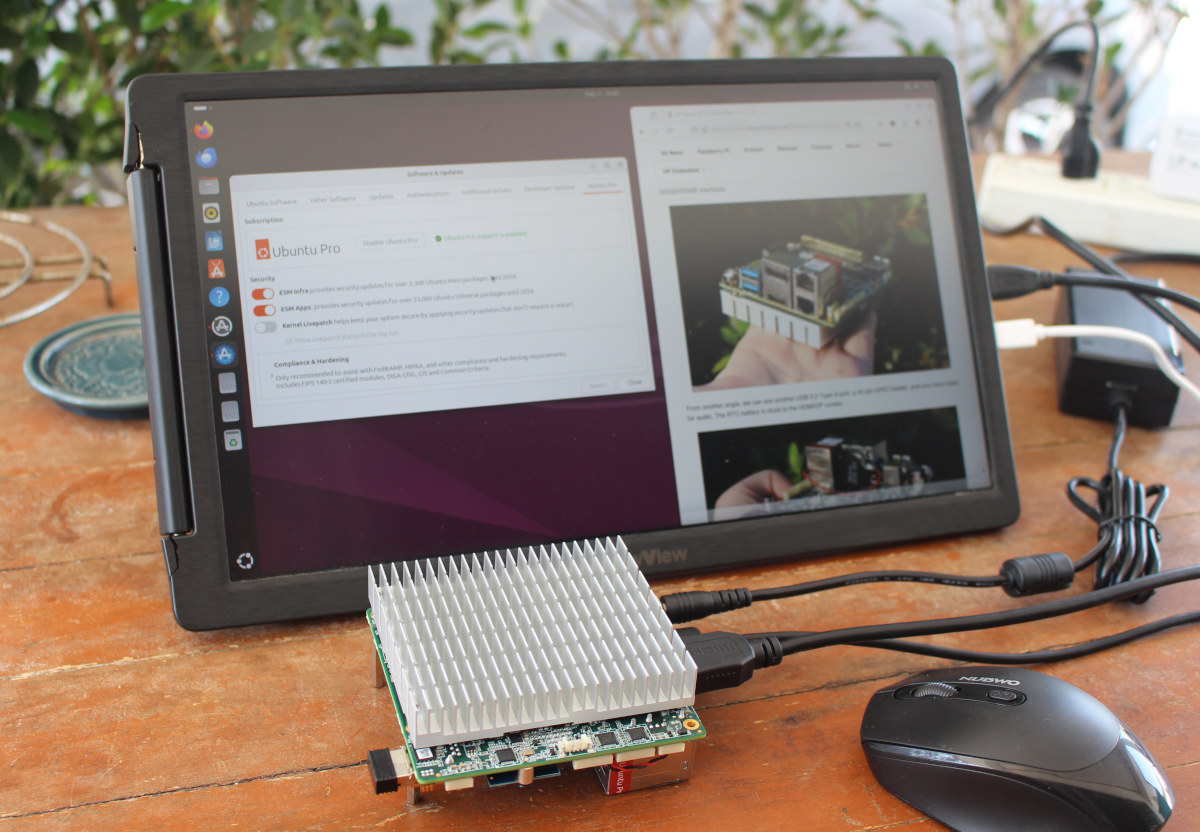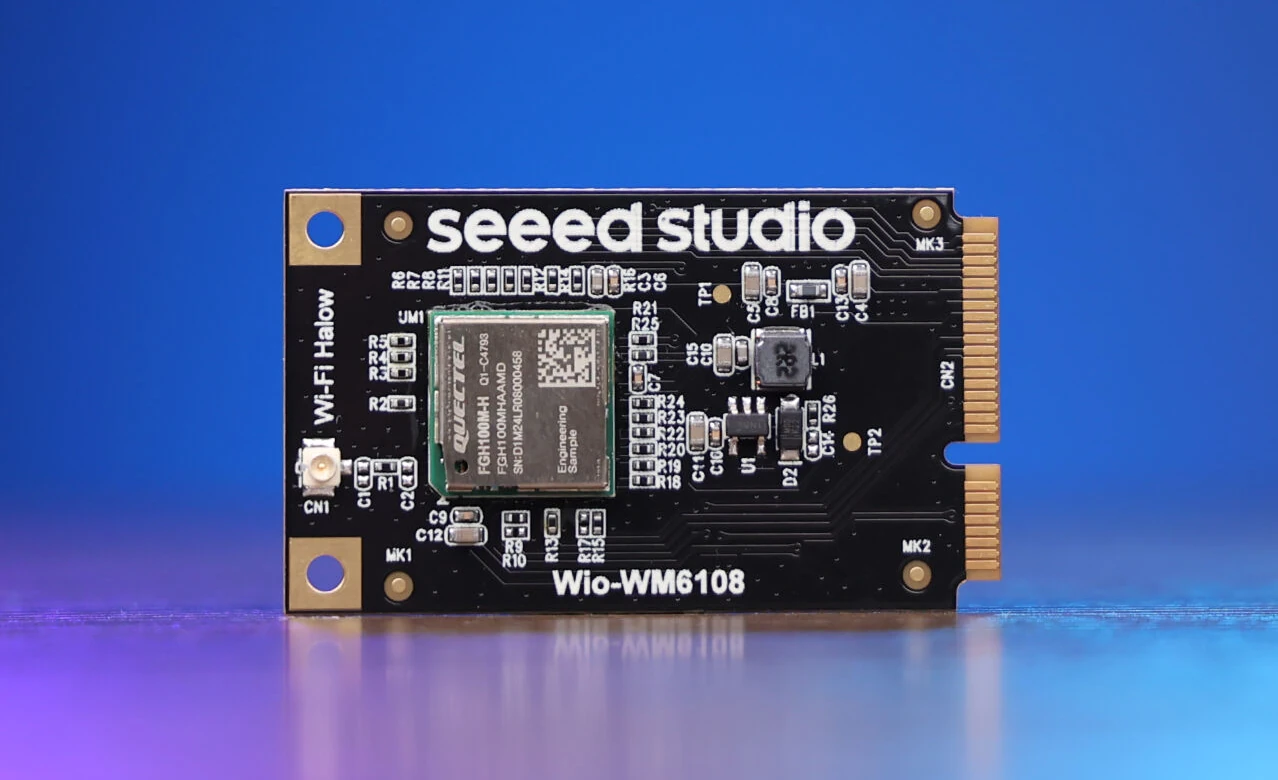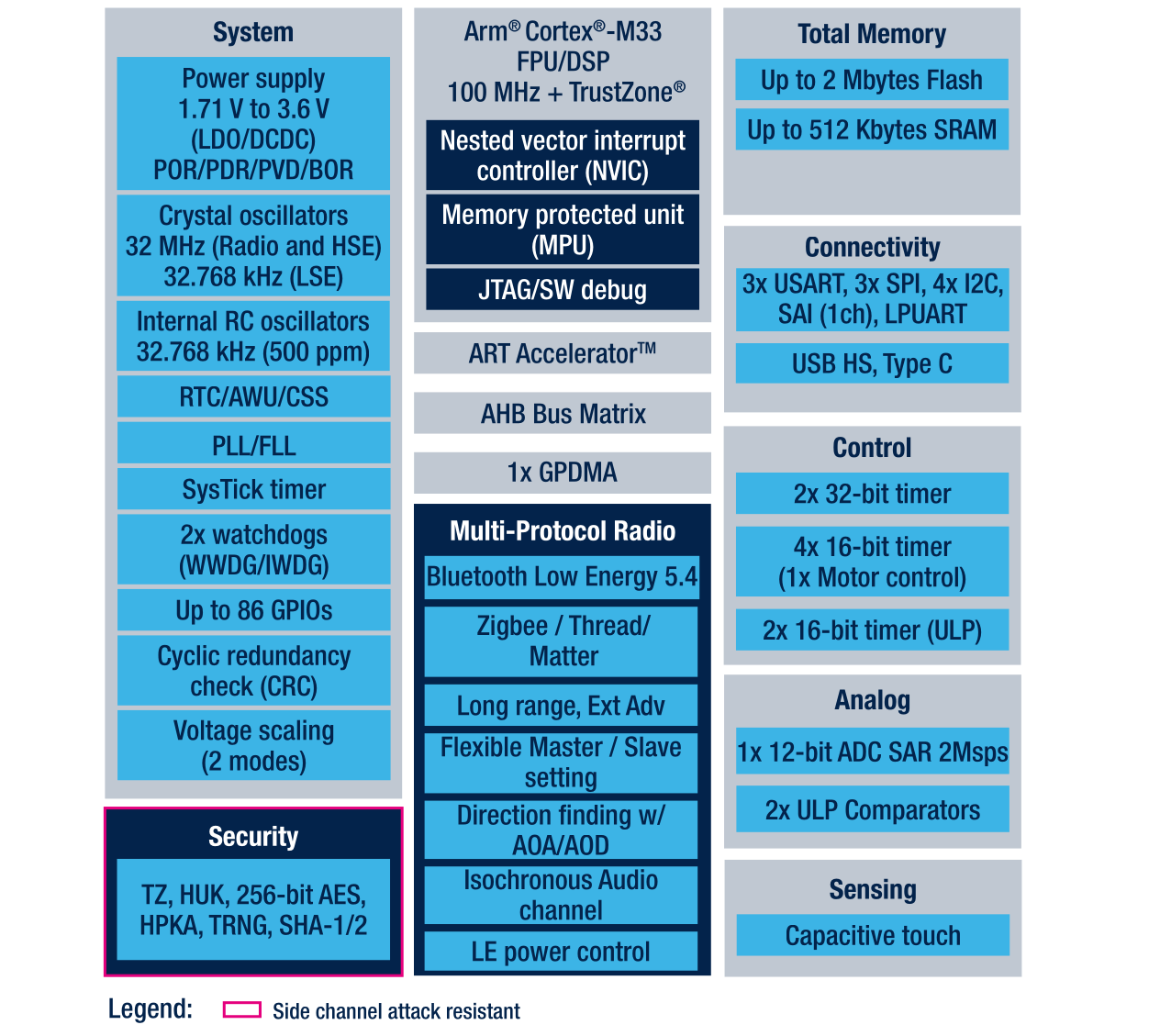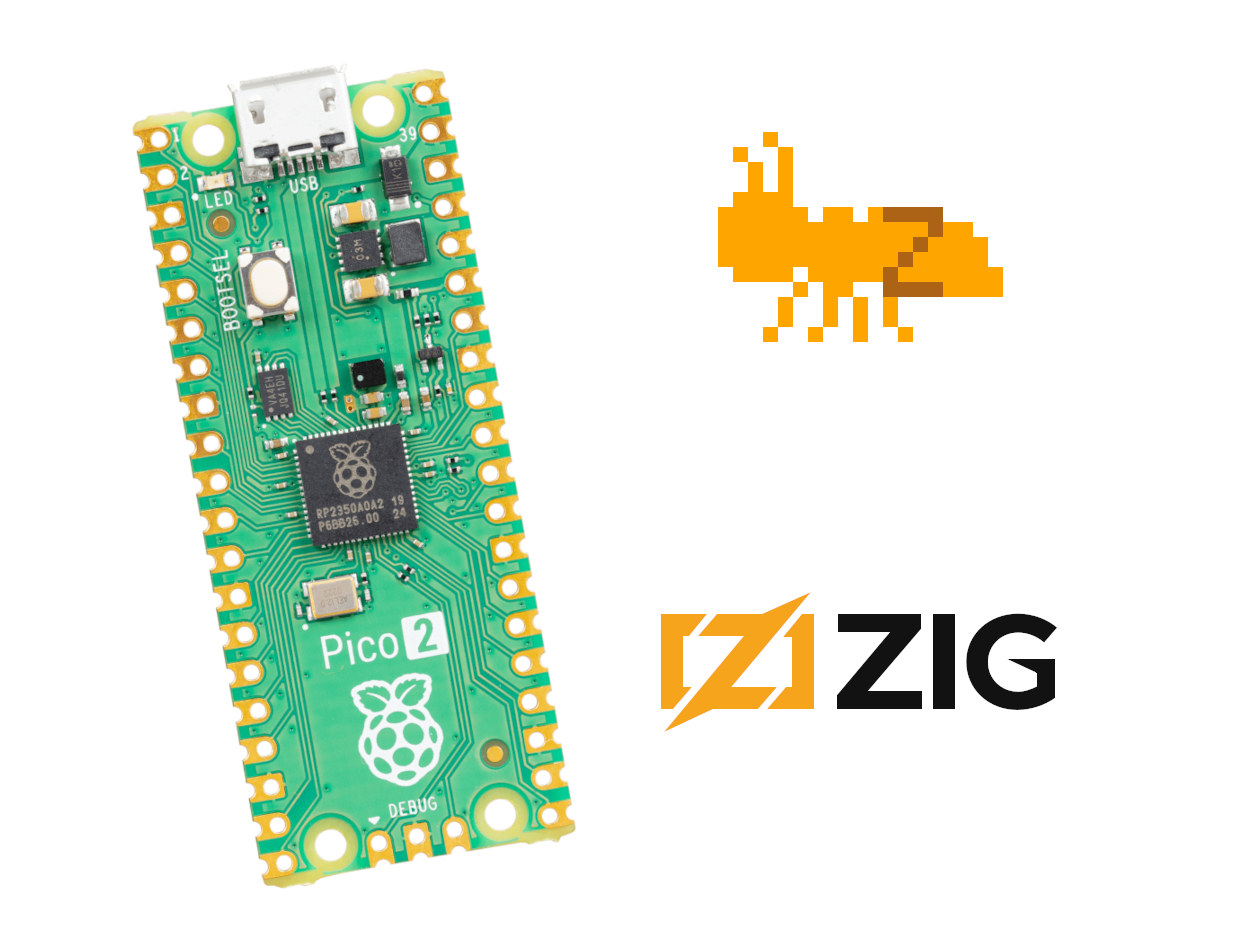ASRock has recently released the iEP-7040E series which are Arrow Lake-H industrial IoT controllers powered by Intel Core Ultra “Arrow Lake-H” SoCs with Intel Arc graphics and Intel AI Boost. They feature a fanless design, 9V to 36V or 19V to 36V DC input, three Gigabit Ethernet ports, and two optional Intel GbE ports with PoE. Depending on the variant, the iEP-7040E supports 4x DI/4x DO or 8x DI/8x DO (with 36V isolation), up to 96GB DDR5 5600MHz with In-Band ECC (IBECC), and Intel In-Band Manageability with TPM 2.0. Expansion options include an M.2 B-Key socket and Nano SIM card slot for cellular, an M.2 E-Key socket for WiFi/BT, and an M.2 2280 M-key socket for storage. I/O options include HDMI 2.0b, VGA, three USB 3.2 Gen2 ports, one USB 2.0 port, three RS232/422/485, audio I/O, and multiple power options with OVP, UVP, OCP, and 80V surge protection. Certified for […]
Adafruit Metro RP2350 development board follows Arduino UNO form factor, features HSTX DVI output
The Adafruit Metro RP2350 is a Raspberry Pi RP2350 development board that closely follows the Arduino UNO form factor for compatibility with existing Arduino shields. Key features include 37 GPIOs, a microSD card slot, a 5V buck converter (6–17V input), an onboard RGB NeoPixel, a Stemma QT port for I2C peripherals, a 22-pin HSTX port for DVI video output, and a USB Type-C port for power and data. It also provides a Pico Probe debug port, an RX/TX switch for UART flexibility, and a UF2 bootloader for easy firmware updates. Target applications include IoT projects, embedded system development, hardware prototyping, and educational purposes. Adafruit Metro RP2350 specifications SoC – Raspberry Pi RP2350 CPU Dual-core Arm Cortex-M33 @ 150 MHz with Arm Trust zone, Secure boot Dual-core RISC-V Hazard3 @ 150 MHz Up to two cores can be used at any given time Memory – 520 KB on-chip SRAM Security 8KB of […]
UP Squared 7100 Review – Part 2: An Intel N100 fanless SBC preloaded with Ubuntu Pro 24.04
I’ve already checked out the hardware of the UP Squared 7100 fanless SBC in the first part of the review with an unboxing and first boot to Ubuntu Pro 24.04. I’ve now had time to test the features of the Intel N100 SBC with Ubuntu Pro, so I’ll report my experience with the system in this second part of the review.
I’ll report my experience with Ubuntu Pro features, test hardware features of the board including GPIOs, check out BIOS options, run a few benchmarks, and measurement power consumption.
ESP32-C6 is the first RISC-V microcontroller to achieve PSA Level 2 security compliance
Arm introduced the Platform Security Architecture (PSA) back in 2017 to make Internet of Things (IoT) chips more secure. Since then we’ve seen many PSA certified products such as Silicon Labs’ EFR32FG23 (FG23) and EFR32ZG23 (ZG23) Cortex-M33 microcontrollers with PSA Level 3 certification. But as announced in 2017, PSA is architecture-agnostic, and the security architecture has gone beyond just certifying Arm microcontrollers, as shown by Espressif Systems who just announced that the ESP32-C6 RISC-V wireless microcontroller was now PSA Level 2 certified. The ESP32-C3 RISC-V MCU also achieved PSA certification earlier, but at the lower Level 1. The PSA-L2 certification was mostly made possible thanks to the ESP-TEE (Trusted Execution Environment) firmware that provides hardware-enforced isolation to enhance security for operations such as cryptographic key management, secure boot verification, and firmware updates. Espressif also reminded us of ESP32-C6’s hardware security features in the announcement: Physical Memory Protection (PMP) and Access […]
Seeed Studio launches Wi-Fi HaLow mini PCIe module for Raspberry Pi, add-on board for XIAO boards
Seeed Studio has launched two 900 MHz WiFi HaLow modules for long-range, low-power communication based on Quectel FGH100M-H: the Wio-WM6180 Wi-Fi HaLow mini-PCIe module designed to be installed in hardware such as OpenWrt routers or even Raspberry Pi SBCs, and the Wi-Fi HaLow module for Seeed Studio XIAO designed to take XIAO boards with Espressif, Raspberry Pi, or Nordic Semi microcontrollers. These solutions can be useful for Smart Home devices, industrial automation, Smart City infrastructure, Smart Agriculture, and environmental monitoring systems. The most typical use cases are WiFi HaLow cameras with up to one kilometer range. Wio-WM6180 Wi-Fi HaLow mini-PCIe Module Specifications: Quectel FGH100M-H Wi-Fi HaLow module compliant with IEEE 802.11ah standard. Chipset – Morse Micro MM6108 Wi-Fi Frequency Band – 902–928 MHz Operating mode – Access Point (AP) or Station (STA) Modulation – OFDM, BPSK, QPSK, 16QAM, 64QAM Data Rate – Up to 32.5Mbps link rate Range – Up […]
STMicro STM32WBA6 2.4 GHz wireless MCU gets up to 2MB flash, 512KB SRAM, USB OTG, and more
STMicro had two announcements yesterday. I’ve already covered the launch of the ultra-low-power STM32U3 microcontroller family, so today, I’ll check the new 100 MHz STM32WBA6 Cortex-M33 wireless MCU family with 2.4GHz radios for Bluetooth LE 6.0, Zigbee, Thread, and Matter designed for wearables, smart home devices, remote weather sensors, and more. The STM32WBA6 is an evolution of the STM32WBA family introduced last year, especially of the STM32WBA54 and STM32WBA55 with many of the same features SESIP (Security Evaluation Standard for IoT Platforms) Level 3 security certification, but gets more memory and flash with up to 512KB of SRAM and up to 2MB of flash. The new STM32WBA6 family also gains a High-Speed USB OTG interface and extra digital interfaces such as three SPI ports, four I2C ports, three USARTs, and one LPUART. STMicro STM32WBA6 key features and specifications: MCU core – Arm Cortex-M33 at 100MHz with FPU and DSP Memory […]
Zant – An open-source Zig SDK for neural network deployment on microcontrollers
Zant is an open-source, cross-platform SDK written in Zig and designed to simplify deploying Neural Networks (NN) on microcontrollers. It comprises a suite of tools to import, optimize, and deploy NNs to low-end hardware. The developers behind the project developed Zant (formerly known as Zig-ant) after noticing many microcontrollers lacked robust deep learning libraries, and made sure it would be on various platforms such as ARM Cortex-M or RISC-V microcontrollers, or even x86 targets. Contrary to platforms like Edge Impulse that focus on network creation, Zant is about deployment and outputs a static, highly optimized library ready to be integrated into any existing work stack. Zant highlights: Optimized Performance – Supports quantization, pruning, and hardware acceleration techniques such as SIMD and GPU offloading. Low memory footprint – Zant employs memory pooling, static allocation, and buffer optimization to work on resources-constrained targets. Ease of Integration: With a modular design, clear APIs, […]
LincStation N2 and S1 6-bay HDD/SSD NAS systems ship with Intel N100/N97 CPU, UnRaid OS (Crowdfunding)
LincPlus LincStation N2 and S1 are two 6-bay NAS systems taking SATA or SSD drives based on Intel Processor N100 or N97 CPU, and running UnRaid OS Linux distribution by default. The LincStation N2 features an Intel N100 CPU coupled with 16GB LPDDR5 and 128GB eMMC flash, two SATA bays for 2.5-inch drives, four M.2 2280 NVMe SSD slots, and 10GbE networking. The LinStation S1 has a larger design with an Intel N97 CPU, 8GB DDR5 (SO-DIMM, upgradeable), 64GB flash, four SATA bays for 3.5-inch drives, two M.2 2280 NVMe SSD slots, and two 2.5GbE ports. Both models also come with USB ports for expansion. LincStation N2 NAS Specifications: SoC – Intel Processor N100 quad-core processor up to 3.4 GHz with 6MB cache, 24EU Intel UHD Graphics Gen 12 @ 750 MHz; TDP: 6W System Memory – 16GB LPDDR5 (soldered on mainboard) Storage 128GB eMMC flash 2-bay SATA3.0 slots for […]


